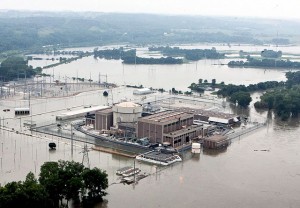 In “Why We Still Need Nuclear,” the “op-ed” piece written in the New York Times, July 30, 2011, Tom Kilgore, the President and CEO of the Tennessee Valley Authority, seems to have made up his mind to attempt to complete the Bellefonte 1 nuclear power plant, in Hollywood, Alabama. Mr. Kilgore is in good company: the President of Iran, Mahmoud Achmadinejad, also wants to build nuclear power plants.
In “Why We Still Need Nuclear,” the “op-ed” piece written in the New York Times, July 30, 2011, Tom Kilgore, the President and CEO of the Tennessee Valley Authority, seems to have made up his mind to attempt to complete the Bellefonte 1 nuclear power plant, in Hollywood, Alabama. Mr. Kilgore is in good company: the President of Iran, Mahmoud Achmadinejad, also wants to build nuclear power plants.
The TVA began work on the Bellefonte nuclear plants in 1974. Construction was suspended in 1988, after the TVA spent about $4.1 Billion on the plant. The TVA wants to spend another $5 Billion over the next six to eight years to complete the plant. It would therefore cost a total of $9.1 Billion to construct a 1.26 gigawatt plant. That’s $7.22 Billion per gigawatt, plus interest, over a period that spans 34 years, with construction in three phases: 14 years of work from ’74 to ’88, 22 years of non-work, from ’88 to 2012, and another six to eight years of work. (Times Free Press, TVA News, TVA Environment).
This suggests the real reason why the TVA wants to complete the plant. Currently Bellefonte 1 a $4.1 billion liability on the TVA’s books. If the TVA adds another $5 Billion, this $4.1 hot white elephant will be magically transformed into a cool (but heat producing) 9.1 billion asset.
What else could $9.1 Billion buy?
| Energy Alternatives | per Gigawatt | $9.1 Billion |
| Nuclear | $7.22 Billion | 1.26 GW |
| Solar | $5.0 B | 1.82 GW |
| Offshore Wind | $3.0 B | 3.033 GW |
| Land Based Wind | $2.0 B | 4.55 GW |
Wind and solar may not be steady, but they are predictable, and therefore, reliable sources of energy. However, solar, which obviously doesn’t produce any power at night, must be used as a component of a combined cycle power system. This is the only negative.
The Fort Calhoun plant, a few miles north of Omaha, Nebraska, was built on the western bank of the Missouri River. It is today in the middle of the flooded river; has been since June 6, 2011, the plant’s operators found the plant in the middle of the river. Fortunately the plant had been shut-down for refueling before the flooding. While the owners are losing $1 million per day, since June 6, the radiological risks have been minimal. The plant will be off-line, not generating power, but maintained in an emergency standby state until the waters recede. It will also need to be maintained and repaired. (See Nuclear Plant Recovery Being Planned, Josh Funk, AP / Bloomberg).
- As of midnight July 31, Fort Calhoun has cost the rate-payers $55 Million because it is shut down.
- Fort Calhoun is not likely to be brought back online before June 30, 2012, if it is brought back online at all.
- Fort Calhoun will cost the ratepayers another $385 Million by the end of June, 2012.
On the other hand, solar and wind plants cannot melt-down. They do not burn fuel, which must be mined, processed, transported, managed and secured, or create toxic wastes which must be managed for thousands of years.
The probability of an accident may be low, but the probability of an accident being extremely expensive, if it occurs, is a virtual certainty. This is why the Germans are phasing out nuclear power.